|
|
|
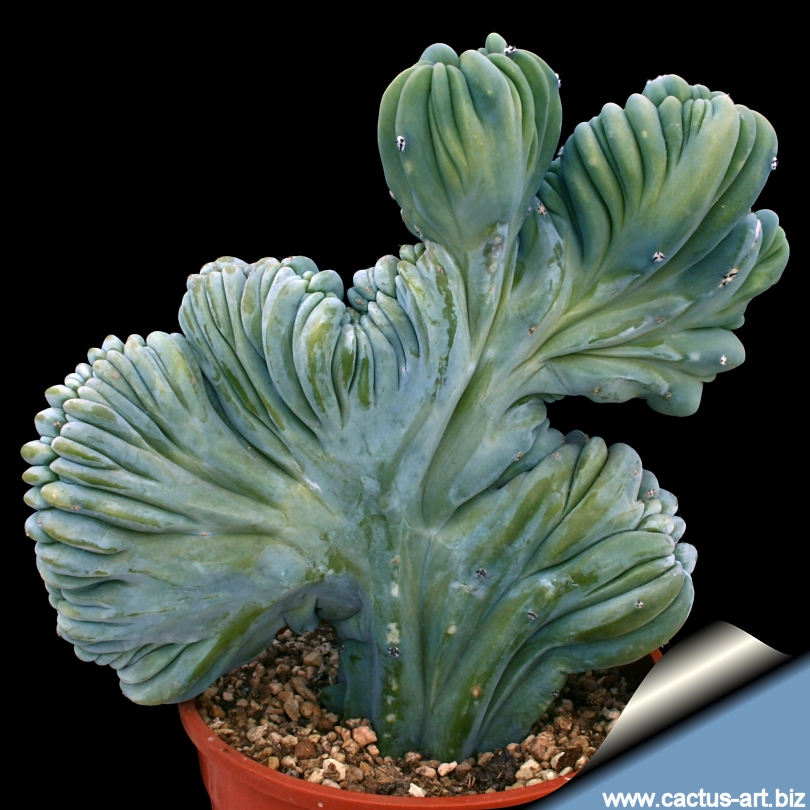
Myrtillocactus
geometrizans forma cristata (Dinosaur Back Plant) is an interesting waxy
blue cactus
that forms a tree-like trunk which has a tendency to fan out clustering
over one another. Occasionally, when new branches form out from a crest
they may revert to the normal growth pattern, giving rise to a more
bizarre appearance.
|
|
Description: There are several crested clones
of Myrtillocactus geometrizans that have a tendency to fan out, some
will form stable crests while others (the more common) just cluster over
one another. Regardless, both types make for a spectacular landscape
attraction.
Flowers & fruit: In the summer, delicate looking cream colour
flowers (2.5-3.7 cm) appear, decorating the cacti’s entire body,
succeeded by a tiny very sweet, edible, plum-like fruit.
|
|
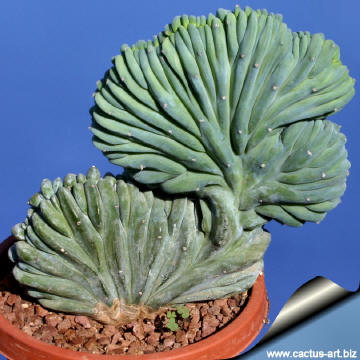 |
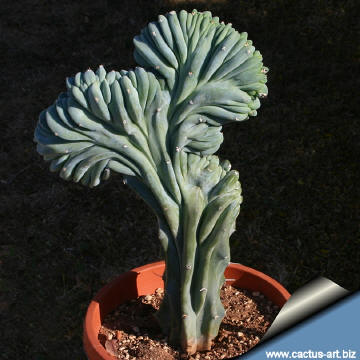 |
|
. |
|
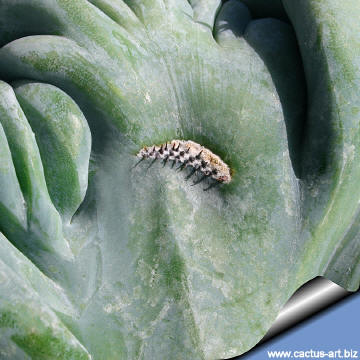 |
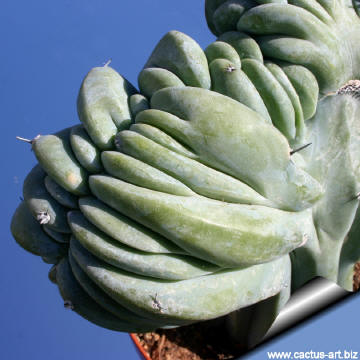 |
|
Photo of conspecific taxa,
varieties, forms and cultivars of Myrtillocactus geometrizans.
|
|


Advertising
|
|
|
|
|
|
|
Family:
Cactaceae (Cactus
Family)
Scientific Name:
Myrtillocactus geometrizans
(Mart. ex Pfeiff.) Console, 1897
Forma cristata
Origin:
Garden origin (Nursery
produced cultivar)
Conservation status: Listed in
CITES appendix 2.
Common Names include: Crested Blue Myrtle,
Dinosaur Back Plant, Crested Blue Candle; Crested Blue Flame.
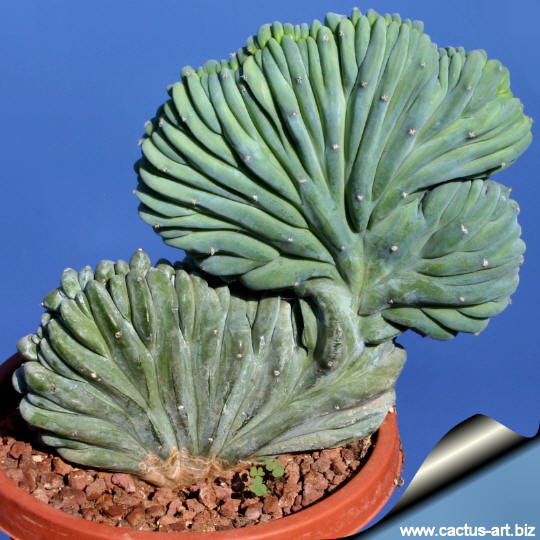
|
|
|
|
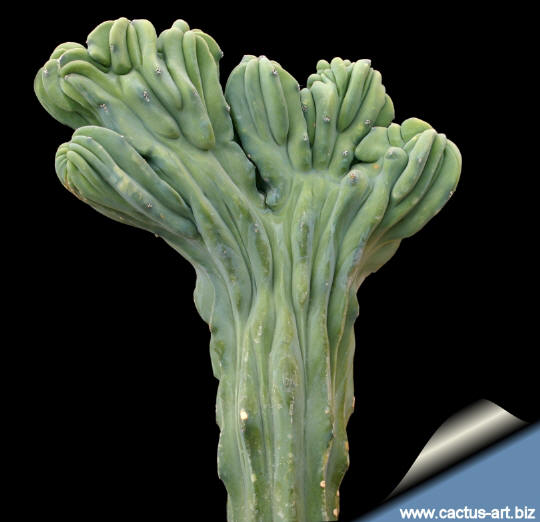
Culture: The crests are frequently grafted
onto a normal a Myrtillocactus trunk but are easily grown on their own
roots. Any normal shoots should be removed to promote the growth of the
crest
This cactus tolerates exposure to full sun and generally welcomes
moderate watering.They are semi hardy. Make sure that your
Myrtillocacti are not exposed to temperatures
below -4°C, or they may die. Nevertheless it is good advice never let
the night-time temperature fall below 10°C. Water regularly in summer,
but allow to dry fully before watering again. It needs a well-drained
soil mix, with small gravel added to ensure drainage. During the winter
months plants should be rather kept dry, and water is restricted to only
enough to keep the stems and branches from shrivelling. Since they are
big-sized plants need plenty of space for their roots, repotting should
be done every other year, or when the plant has outgrown its pot.
Exposure: Light shade when young, full sun later.
Propagation: Cuttings in summer (Cuttings will
root only in hot weather. Cuttings must be kept very dry to root).
|
|